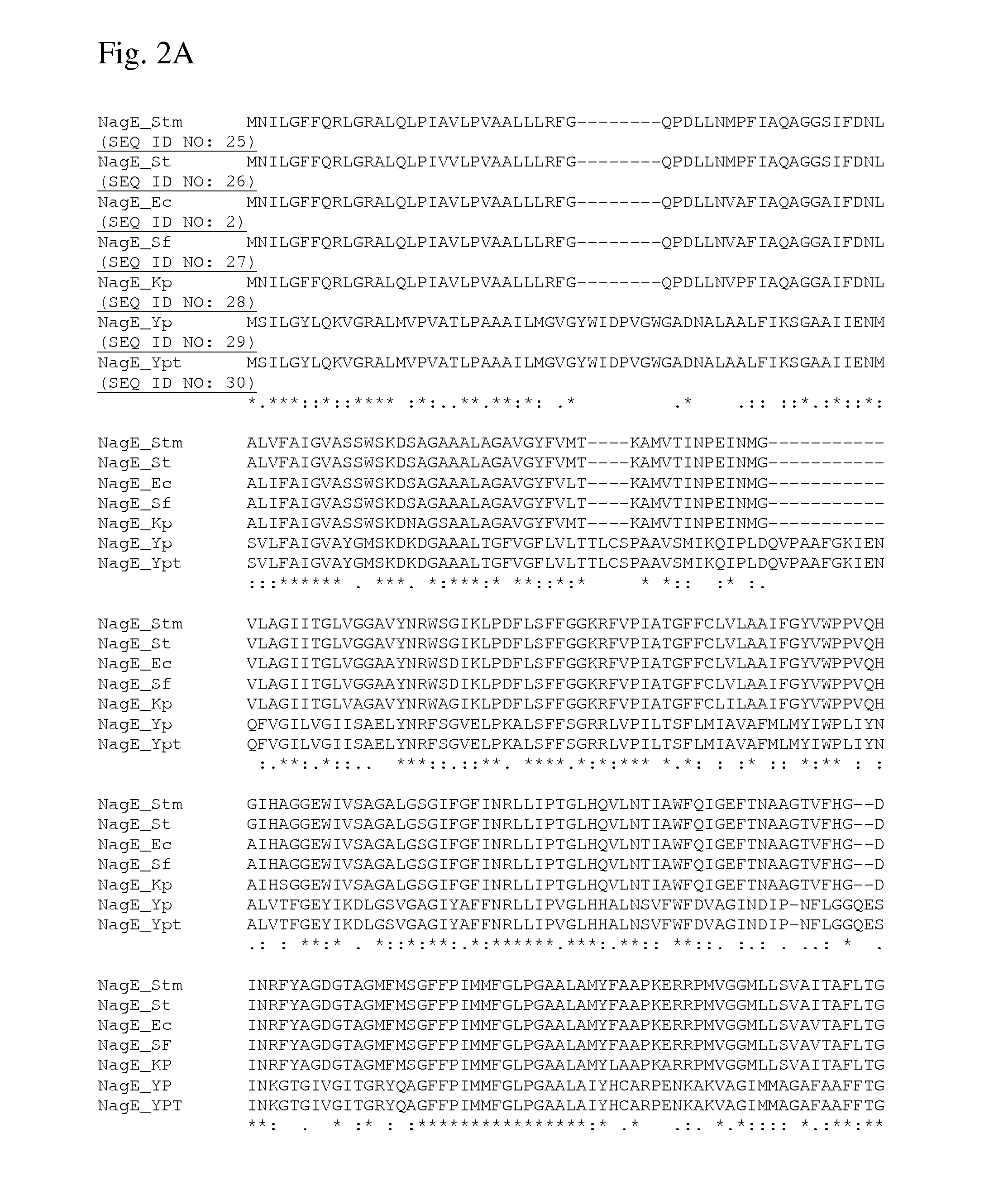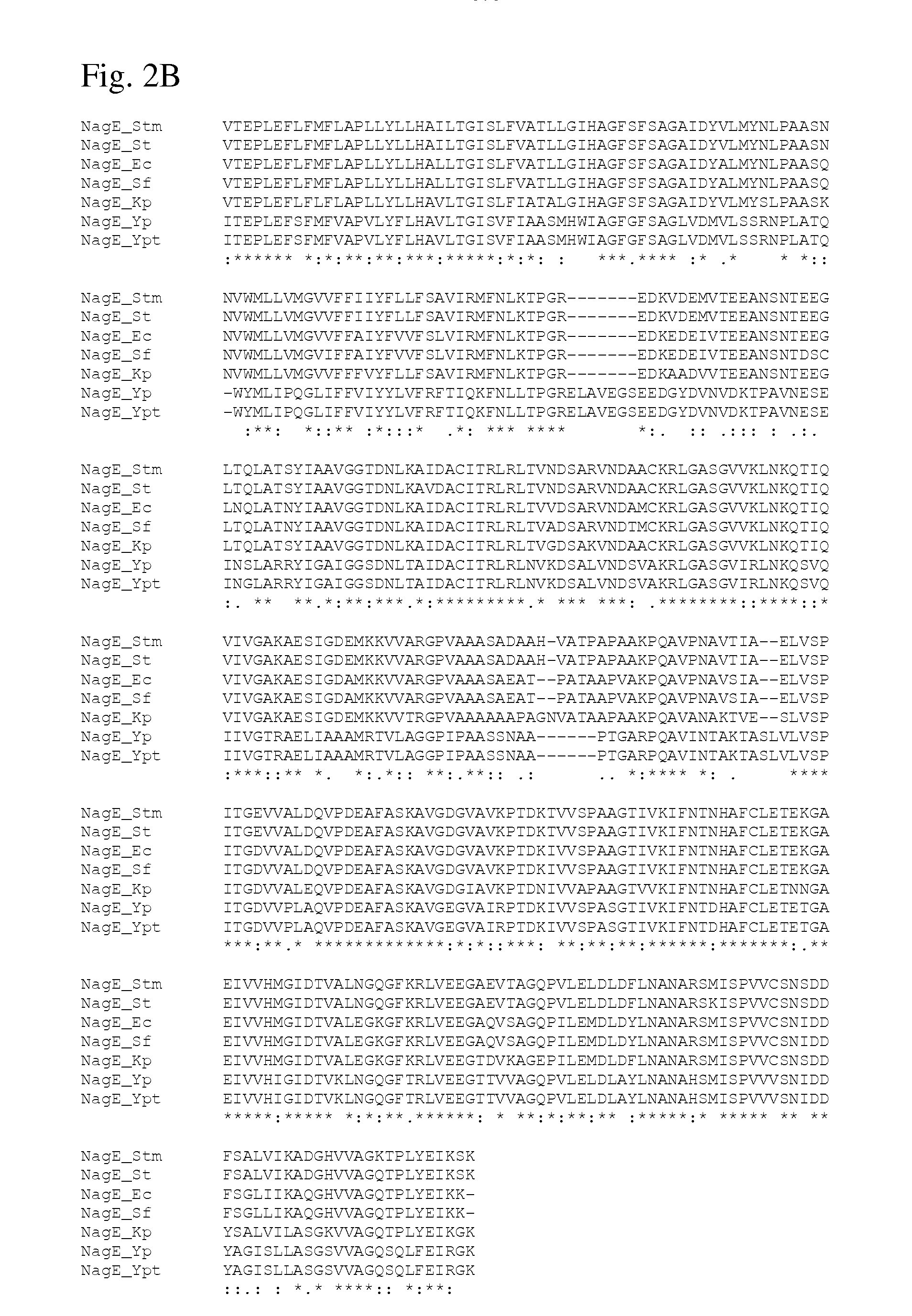Method for producing l-amino acids using bacterium of the enterobacteriaceae family
- Summary
- Abstract
- Description
- Claims
- Application Information
AI Technical Summary
Benefits of technology
Problems solved by technology
Method used
Image
Examples
example 1
Preparation of the E. coli Strain MG1655 Δtdh::rhtA*
[0153] The L-threonine producing E. coli strain MG1655 Δtdh, rhtA* (pVIC40) was constructed by inactivation of the native tdh gene in E. coli MG1655 (ATCC700926) using the cat gene followed by introduction of an rhtA23 mutation which confers resistance to high concentrations of threonine (>40 mg / ml) and homoserine (>5 mg / ml). Then, the resulting strain was transformed with plasmid pVIC40 from E. coli VKPM B-3996. Plasmid pVIC40 is described in detail in the U.S. Pat. No. 5,705,371.
[0154] To substitute the native tdh gene, a DNA fragment carrying the chloramphenicol resistance marker (CmR) encoded by the cat gene was integrated into the chromosome of E. coli MG1655 in place of the native gene by the method described by Datsenko K. A. and Wanner B. L. (Proc. Natl. Acad. Sci. USA, 2000, 97, 6640-6645) which is also called “Red-mediated integration” and / or “Red-driven integration”. The recombinant plasmid pKD46 (Datsenko, K. A., Wann...
example 2
Substitution of the Native Promoter Region of the nagE Gene in E. coli by Ptac Promoter
[0160] To substitute the native promoter region of the nagE gene, a DNA fragment carrying a modified Ptac promoter (with deletion of one nucleotide in LacI-binding site region that led to absence of LacI-dependent repression) and kanamycin resistance marker (KmR) encoded by the kan gene was integrated into the chromosome of E. coli MG1655 Δtdh::rhtA in place of the native promoter region by the method described by Datsenko K. A. and Wanner B. L. (Proc. Natl. Acad. Sci. USA, 2000, 97, 6640-6645) which is also called “Red-mediated integration” and / or “Red-driven integration”.
[0161] The modified Ptac promoter was obtained by PCR using the commercially available plasmid pK 223-3 (Pharmacia) as a template and primers P5 (SEQ ID NO: 7) and P6 (SEQ ID NO: 8). Primer P5 contains a BglII recognition site at the 3′-end thereof, which is necessary for further joining to the kan gene and primer P6 contains ...
example 3
Effect of Increasing the nagE Gene Expression on L-Threonine Production
[0168] To evaluate the effect of enhancing expression of the nagE gene on threonine production, both E. coli strains MG1655Δtdh, rhtA*, PtacnagE and MG1655Δtdh, rhtA* were transformed with plasmid pVIC40.
[0169] Then E. coli strains MG1655Δtdh, rhtA*, PtacnagE and MG1655Δtdh, rhtA* were each cultivated at 37° C. for 18 hours in a nutrient broth, and 0.3 ml of each of the obtained cultures was inoculated into 3 ml of fermentation medium having the following composition in a 20×200 mm test tube and cultivated at 37° C. for 24 hours with a rotary shaker.
[0170] After cultivation, the accumulated amount of L-threonine in the medium was determined by paper chromatography using the following mobile phase: butanol:acetic acid:water=4:1:1 (v / v). A solution (2%) of ninhydrin in acetone was used as a visualizing reagent. A spot containing L-threonine was cut off, L-threonine was eluted in 0.5% water solution of CdCl2, and...
PUM
 Login to View More
Login to View More Abstract
Description
Claims
Application Information
 Login to View More
Login to View More - R&D
- Intellectual Property
- Life Sciences
- Materials
- Tech Scout
- Unparalleled Data Quality
- Higher Quality Content
- 60% Fewer Hallucinations
Browse by: Latest US Patents, China's latest patents, Technical Efficacy Thesaurus, Application Domain, Technology Topic, Popular Technical Reports.
© 2025 PatSnap. All rights reserved.Legal|Privacy policy|Modern Slavery Act Transparency Statement|Sitemap|About US| Contact US: help@patsnap.com



